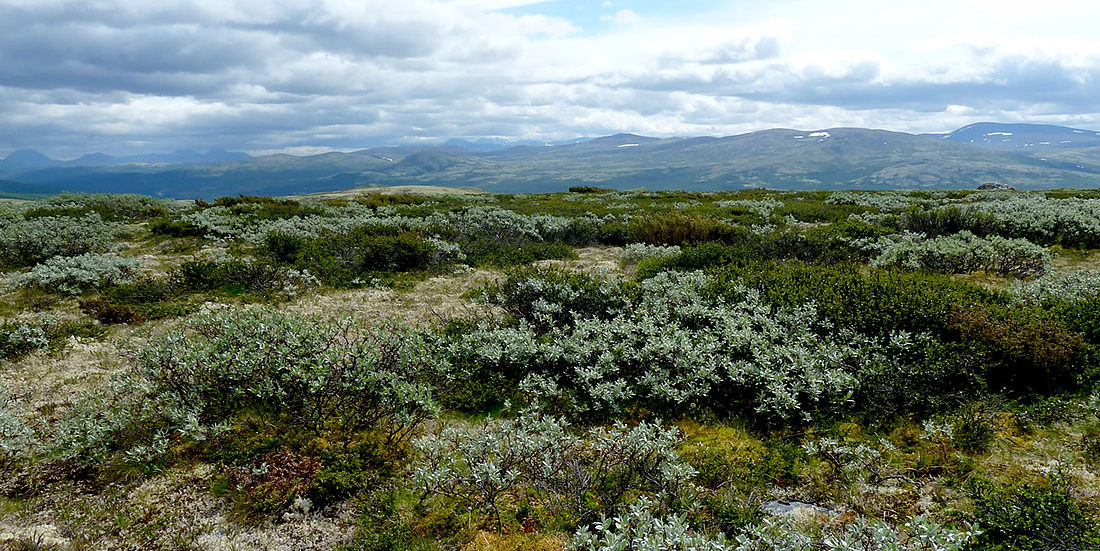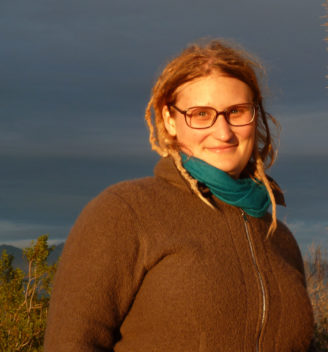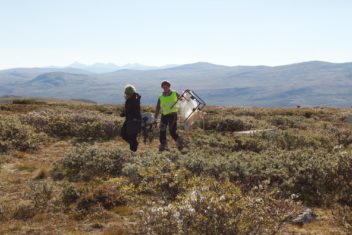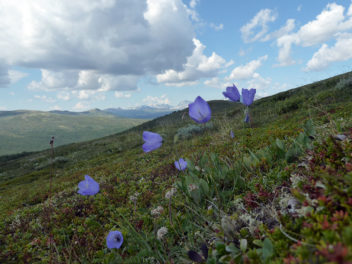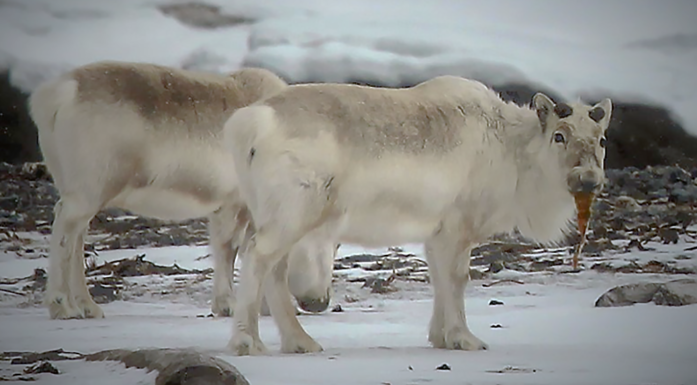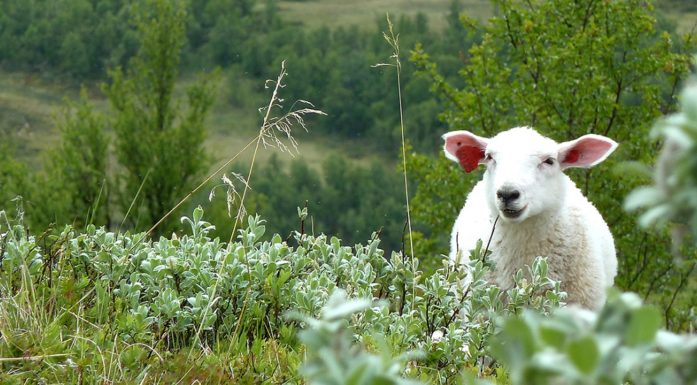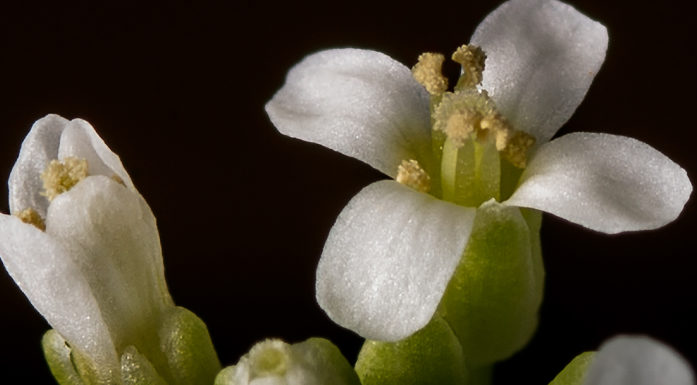Meadows beat out shrubs when it comes to carbon storage
A remote field site in the Norwegian mountains is improving our understanding of carbon cycling in high-latitude alpine areas.
Excess carbon dioxide, emitted by burning fossil fuels like coal and petroleum, is one of the most important factors in driving global warming. While the world is focused on controlling these emissions to limit climate change, less attention has been paid to the capacity of vegetation and soils to take up and store carbon.
One of the most popular approaches to carbon storage is protecting tropical rainforests. If a rainforest is cut down, the carbon stored in the trunks and leaves will be released to the atmosphere. But plants in alpine communities in Norway also have a role to play in storing — or releasing — carbon dioxide.
“We don’t think about how much carbon is actually stored right in our own backyard,” says Mia Vedel Sørensen, a PhD candidate at NTNU’s Department of Biology who is studying carbon storage in shrub vegetation in the Dovre mountains, in mid-Norway.
- You might also like: This ingenious technique not only binds CO2 but improves the soil
Different vegetation types, different storage
Sørensen compared three types of vegetation that are typical of the Norwegian mountains:
- Shrubs (willows)
- Heath (crowberry and heather)
- Meadow
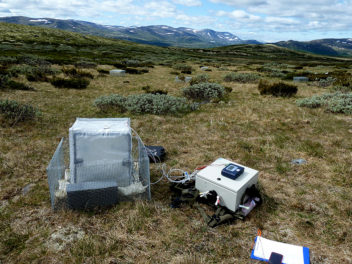
Researchers used this special set-up to measure carbon fluxes in the Dovrefjell Mountains in mid-Norway. Photo: Mia Vedel Sørensen
“I wanted to figure out how much carbon these three vegetation types store and release. My hypothesis was that shrubs store more carbon than heath and meadow vegetation because shrubs have more biomass, and thus have higher rates of photosynthesis,” she said.
But it turned out to be the opposite: Shrubs, even though they are tallest, actually store the least carbon.
“It surprised me that meadows actually store a lot more carbon than shrubs. The carbon in meadows is stored mostly below the ground, next to the roots,” she said.
The amount of carbon stored in heath vegetation is greater than in shrub vegetation, but less than in meadows, she said.
One unusual characteristic of heath vegetation is that it can photosynthesize during the winter, under the snow, because it is evergreen and typically grows in areas with little snow. That means sunlight is able to reach these plants during the winter.
- You might also like: Jellyfish invaders— Trondheim fjord in transition
Expanding shrub communities
Climate change is altering the mix of vegetation in arctic and alpine areas. That’s particularly true in Norway’s mountains, where shrub thickets are expanding in area. That’s also partly a cultural change, because changing farming practices result in fewer animals in the mountains. This allows shrubs to grow in places where animals such as sheep might have once eaten shrub seedlings, while a warmer climate means that shrubs can grow at higher elevations in the mountains.
“It is important to find out what happens to carbon capture and storage when shrubs and bushes take over areas that used to be covered by heath vegetation. How will carbon storage be affected in alpine and arctic regions when shrub communities expand at the expense of meadow and heaths?” Sørensen said.
Carbon and carbon dioxide
- Carbon is the building block for all life.
- Carbon dioxide is a chemical compound made up of carbon and oxygen, written CO2.
- CO2 is a non-combustible, acidic, colourless and odourless gas.
- CO2 is an important part of the global carbon cycle, as well as a natural part of the air as an important greenhouse gas in the atmosphere.
- Human activity, in particular combustion of fossil fuels, has increased the proportion of parts per million (ppm) of CO2 in the atmosphere from about 280 before the start of industrialization to about 400 ppm by 2015.
- This trend is still on the rise, which reinforces the natural greenhouse effect and contributes to global warming.
- When substances containing carbon is burned, CO2 is released.
The gas is emitted by living creatures as a product of respiration. - Plants, algae and some bacteria store CO2 in their biomass. During photosynthesis, glucose is produced from inorganic CO2 and water.
- Areas with permafrost such as the tundra in the Arctic and Antarctica, boreal forests and mountain areas also store large amounts of carbon.
Measurements in the Dovre mountains
Sørensen and her colleagues spent two summers in the Dovre mountains, where they set up small tents over sample plots in the different vegetation types. The small tents allowed them to measure how much CO2 was consumed and released — or what scientists call CO2 flux — by the plants in the different sample plots. The flux measurements show how much CO2 is taken up by the plants and how much is emitted from the plants and the soil.
In addition, the researchers collected vegetation samples and dug up soil samples. They measured the carbon content in the vegetation, and in the organic and mineral layers of the soil. This gave them information about how much carbon the three different types of vegetation actually store.
“There hasn’t been much research on this previously, so it is interesting to find out more about how much carbon is actually stored in the soil,” she said.
This video explains more about the measurement methods.
The way forward
Sørensen will also investigate why meadow vegetation stores much more CO2 than shrub vegetation.
“Our hypothesis is that it is related to what is happening underground, such as how the roots grow. It may also be related to mycorrhizae, which are fungi that grow in a symbiotic association with plant roots and that can have an effect on carbon emissions. Mycorrhizae are found in both shrubs and in heaths, but not so much in meadow vegetation,” Sørensen said.
She will also look at what happens to the carbon budget when shrubs are transplanted in meadow and health vegetation, and what happens if a protective enclosure is set up around plants so that sheep and other grazing animals aren’t able to eat the vegetation, she said.
This part of her research allows Sørensen to recreate what is happening now in the Norwegian mountains, as shrubs take over other vegetation communities. She will also measure how this affect the CO2 budget accounts.
Six universities involved
Sørensen’s research is part of a major research project called ECOSHRUB, which is a collaboration between NTNU, Nord University, the University of Antwerp, Ghent University, the State Museum of Natural History in Karlsruhe and the University of Arizona.
Climate change is causing shifts in vegetation types and areal extent in both arctic and alpine ecosystems. One of the biggest changes observed is that shrub communities are expanding at the expense of other vegetation types, such as heaths. The ECOSHRUB researchers are looking at what this will do to vegetation, seedlings, microclimate, albedo (the ability to reflect light) — and the carbon budget.
The fieldwork is being done in the Hjerkinn area of Dovrefjell.
Read Mia Vedel Sørensen’s scientific article in Ecosystems: Draining the Pool? Carbon Storage and Fluxes in Three Alpine Plant Communities.
You can also read about Sørensen’s research in her blog.
